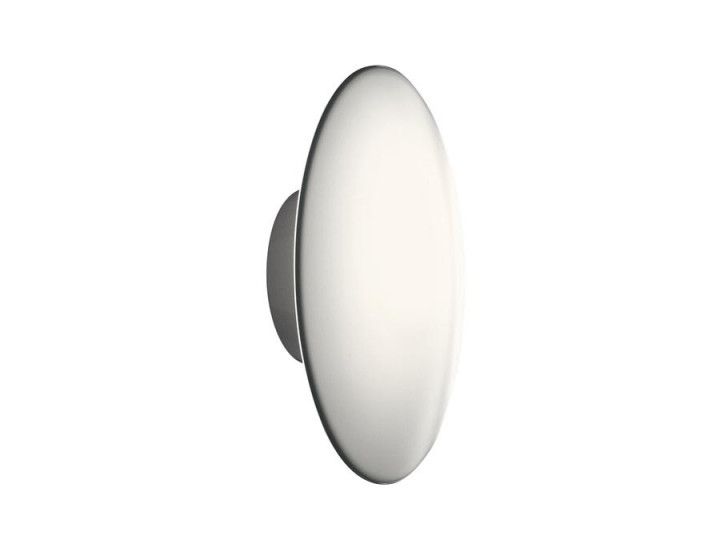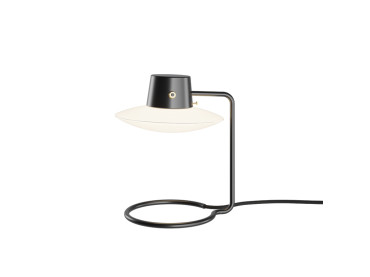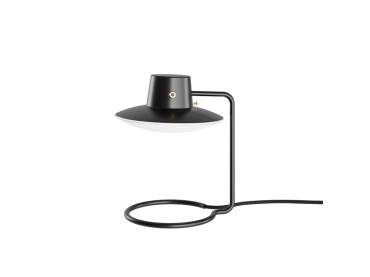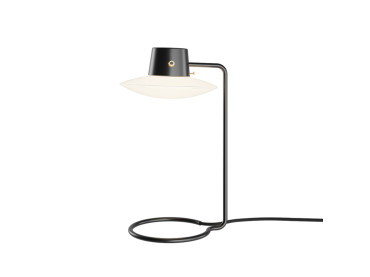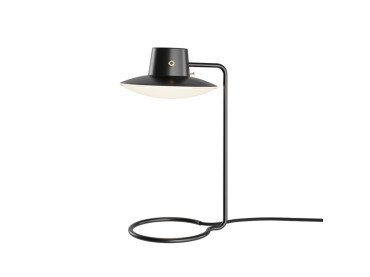AJ Eklipta wall lamp, 3 sizes, new edition
-
Arne Jacobsen
-
Louis Poulsen
- LP033
AJ Eklipta wall lamp, 3 sizes, new edition *Required step
In order to help you to choose, and to receive samples, do not hesitate to contact us by email: contact@galerie-mobler.com or by phone: 01 43 33 20 12
The fixture emits soft comfortable light. The glass is designed to provide a uniformly lit surface. The three-layer mouth-blown opal glass shade has a transparent edge, providing a decorative halo of light around the fixture. AJ Eklipta was designed by Arne Jacobsen in 1959 for Rødovre Town Hall. Two different sizes were produced for this project – 350 mm and 450 mm. They were used indoors on stairways and outdoors as wall lamps. A 220 mm version was later designed for St. Catherine’s College in England. When Arne Jacobsen used the fixture himself on stairways he always preferred the largest model. The fixture is being used around the world today in a variety of architectural contexts.
| Dimensions | Width x Height x Length (mm)220 x 105 x 220 Max. 0,6 kg350 x 100 x 350 Max. 3,6 kg450 x 100 x 450 Max. 6,2 kg |
| Material | Ceiling/Wall box: Die cast aluminium or spun aluminium. Diffuser: Mouth-blown white opal glass. Light source : E27 standards |
| Style | Classique Neuf |
| Origin | Denmark |
| Fournisseur | Louis Poulsen |
Arne Jacobsen
Denmark (1902-1971)
Arne Jacobsen trained at the Technical School and continued his training at The Royal Danish Academy of Fine Arts’ School of Architecture, graduating in 1927. He was employed with the city architect in Copenhagen 1927-29 and then established his own design practice. 1956-65 he was a professor at The Royal Danish Academy of Fine Arts’ School of Architecture. Arne Jacobsen worked as an architect and designer.
During his education at the School of Architecture he was influenced by neo-classicism, but around 1930 he helped introduce functionalism in Denmark. Inspired by international functionalism, he in the following years designed the white housing estate Bellavista in Klampenborg (1934), the town halls inAarhus (1942) and Rødovre (1956), SAS Royal Hotel in Copenhagen (1960) and St. Catherine’s College in Oxford (1964). Jacobsen believed that each element of a house should be shaped by the architect. This is why most of his furniture was developed in connection with particular building projects. The three-legged stacking chair, the Ant, from 1952 (RP00619) was designed for the new small Danish dining kitchens and was simultaneously also used in canteens, the first time in the pharmaceutical factory Novo’s canteen. The Ant, a stacking chair in moulded veneer, was Denmark’s first actual industrially produced chair and soon had four-legged follow-ups such as the 7 and the Seagull (RP03214).
For SAS Royal Hotel he designed the organically shaped foam plastic chairs the Egg, the Swan (RP00128) and the Drop (RP01005), and for the teachers’ table in the dining room at St. Catherine’s College, the monumental Oxford chair (RP02993).
Arne Jacobsen is one of his generations’ great architects and the sculptural chair the Ant, the Egg and the Swan put him on the map as a world-class designer.

